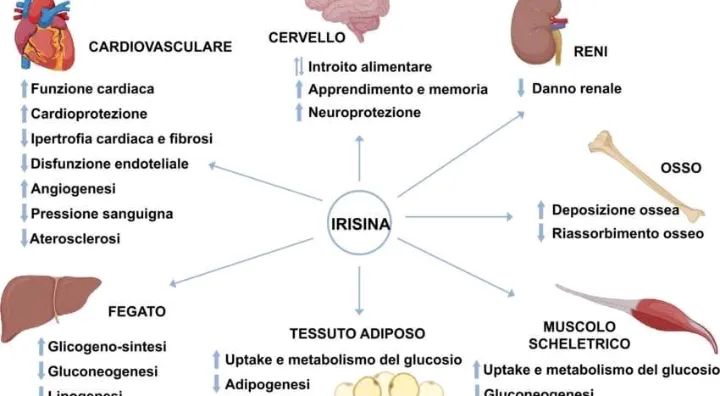WALKING...
THE BENEFITS OF WALKING...
When you carry out physical activity, the skeletal muscle releases IRISIN, a hormone that has benefits on multiple organs.
For example on bones: it promotes bone deposition, reducing its reabsorption.
Very interesting, in particular for subjects with DIABETES or INSULIN RESISTANCE, is the ability of irisin to carry out one of the activities of insulin, i.e. to open the doors for the absorption of glucose at a cellular level, thus reducing the concentration of blood glucose .
So much so that subjects with T1 diabetes (therefore insulin dependent) should dose their insulin correctly depending on whether or not they carry out physical activity, to avoid running the risk of hypoglycaemia.
Furthermore, physical activity also acts at the brain level: it improves learning and memory.
I BENEFICI DEL CAMMINARE...
Quando si svolge attività fisica, il muscolo sceletrico rilascia IRISINA, un ormone che ha benefici su più organi.
Ad esempio sulle ossa: favorisce la deposizione ossea, riducendone il riassorbimento.
Molto interessante, in particolare per i soggetti con DIABETE o RESISTENZA INSULINICA è la capacità dell'irisina di svolgere una delle attivià dell'insulina, ovvero di aprire le porte per l'assorbimento del glucosio a livello cellulare, riducendo quindi la concentrazione di glucosio ematico.
Tantt'è che i soggetti con diabete t1 (quindi insulino dipendenti) dovrebbero dosare correttamente l'insulina a seconda che svolgano o meno attività fisica, per non correre il rischio di una condizione di ipoglicemia.
L'attività fisica inoltre agisce anche a livello del cervello: migliora l'apprendimento e la memora.
When you carry out physical activity, the skeletal muscle releases IRISIN, a hormone that has benefits on multiple organs.
For example on bones: it promotes bone deposition, reducing its reabsorption.
Very interesting, in particular for subjects with DIABETES or INSULIN RESISTANCE, is the ability of irisin to carry out one of the activities of insulin, i.e. to open the doors for the absorption of glucose at a cellular level, thus reducing the concentration of blood glucose .
So much so that subjects with T1 diabetes (therefore insulin dependent) should dose their insulin correctly depending on whether or not they carry out physical activity, to avoid running the risk of hypoglycaemia.
Furthermore, physical activity also acts at the brain level: it improves learning and memory.
I BENEFICI DEL CAMMINARE...
Quando si svolge attività fisica, il muscolo sceletrico rilascia IRISINA, un ormone che ha benefici su più organi.
Ad esempio sulle ossa: favorisce la deposizione ossea, riducendone il riassorbimento.
Molto interessante, in particolare per i soggetti con DIABETE o RESISTENZA INSULINICA è la capacità dell'irisina di svolgere una delle attivià dell'insulina, ovvero di aprire le porte per l'assorbimento del glucosio a livello cellulare, riducendo quindi la concentrazione di glucosio ematico.
Tantt'è che i soggetti con diabete t1 (quindi insulino dipendenti) dovrebbero dosare correttamente l'insulina a seconda che svolgano o meno attività fisica, per non correre il rischio di una condizione di ipoglicemia.
L'attività fisica inoltre agisce anche a livello del cervello: migliora l'apprendimento e la memora.




